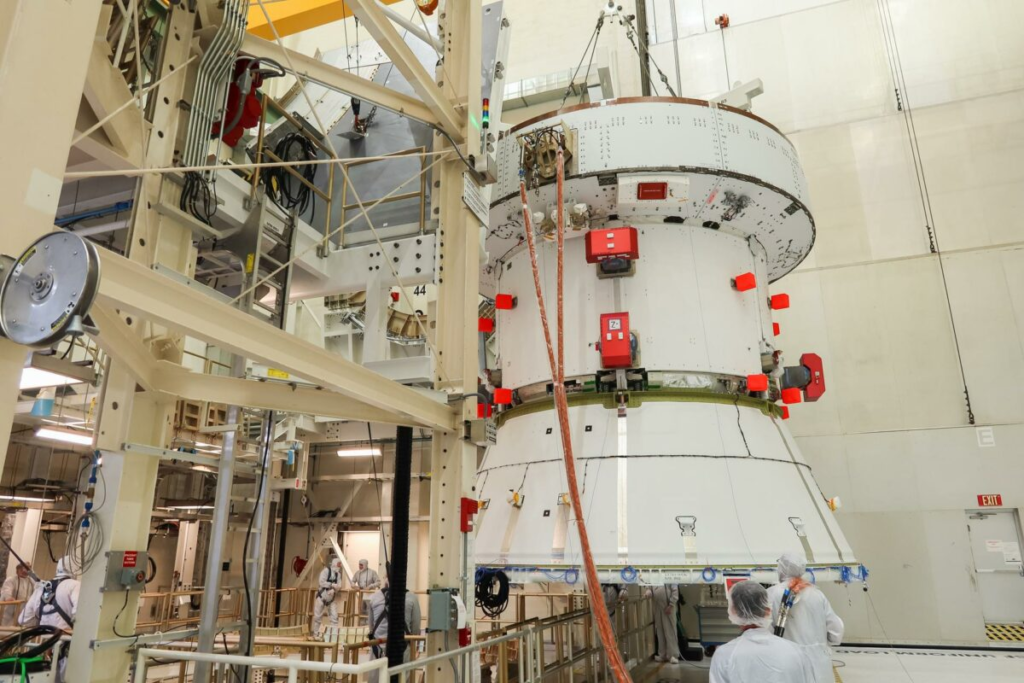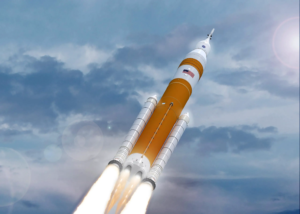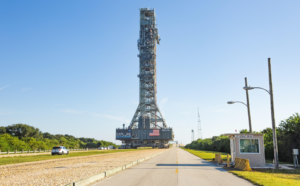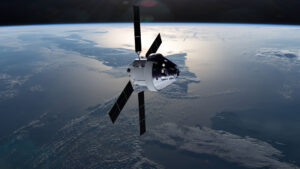
NASA Continues To Make Progress Toward Artemis II
NASA has been very busy as they continue to prepare for the second Artemis mission, Artemis II. After the first successful uncrewed mission around the Moon, this second launch features a full crew and an ambitious flight path. However, before the second Space Launch System rocket can lift off, each of its many partners and contributors needs to complete and ship their core systems.
Recently, we saw work on the European Service Module which provides Orion with primary power and propulsion until it’s discarded at the end of each mission. Specifically, teams are performing final checkouts of the Orion spacecraft’s service module before integrating the crew and service modules for Artemis II.
This comes in addition to even more progress on this exact component just months prior. Once complete, NASA will be one step closer to the first human mission to the Moon in over half a century. Here I will go more in-depth into the recent module progress, the flight profile of Artemis II, what to expect in the next few weeks, and more.
European Service Module

Early last month in May, Engineers completed a series of acoustic tests on the European Service Module (ESM) for NASA’s Artemis II mission while inside the Neil Armstrong Operations and Checkout Building at NASA’s Kennedy Space Center in Florida. During the testing, engineers surrounded the service module with large speakers and attached microphones, accelerometers, and other equipment to measure the effects of different acoustic levels. Engineers and technicians will analyze the data collected during the tests to ensure the service module can withstand the speed and vibration it will experience during launch and throughout the mission.
At the time in a statement the agency said, “With this test complete, the team is on track to integrate Orion’s crew and service modules together later this year.
More recently, only days ago on the 7th, NASA tweeted saying, “@NASAKennedy teams are performing the final checkouts of @NASA_Orion’s service module before joining it with the crew module. The service module will provide water, air, propulsion, & more to the #Artemis II astronauts as they journey around the Moon.”
In this case, teams are in the process of performing final checkouts of the Orion spacecraft’s service module before integrating the crew and service modules for Artemis II, the first Artemis mission with crew. In parallel, technicians from Airbus will conduct inspections of the solar array wings following the successful completion of service module acoustic testing just mentioned. During the inspections, each of the four panels will be fully redeployed and reexamined. The crew module also will undergo acoustic testing ahead of joining with the service module.
Provided by ESA (European Space Agency), the service module is the powerhouse that will fuel, propel, and provide in-space maneuvering capability, and is responsible for life support commodities such as water and breathable air for astronauts onboard Orion in support of future Artemis missions.
The module’s first flight was Artemis 1, the first major milestone in NASA’s Artemis program to return humans to the Moon, on November 16, 2022. The Space Launch System launched Orion toward the Moon, where the ESM placed the spacecraft into a distant retrograde orbit around the moon, and subsequently extracted it from that orbit and sent it back to Earth.
The service module supports the crew module from launch through separation prior to re-entry. It provides in-space propulsion capability for orbital transfer, attitude control, and high altitude ascent aborts. This module can also transport unpressurized cargo and scientific payloads.
In comparison with the Apollo command and service module, which previously took astronauts to the Moon, the European Service Module generates approximately twice as much electricity, weighs nearly 40% less when fully fuelled, and is roughly the same size, supporting the environment for a slightly (45%) larger habitable volume on the crew module, though it will carry 50% less propellant for orbital maneuvers. The module will be able to support a crew of four for 21 days against the 14 day endurance for the three-man Apollo.
In November 2019, ESA member states approved the financing of ESMs for Artemis 3 and 4. In May 2020 the contract between Airbus and the European Space Agency for the production of a third European Service Module was signed. Later that year, ESA and NASA signed a Memorandum of understanding which includes the provision by ESA of ESM-4 and ESM-5 as a participation in the Gateway, allowing three flights of European astronauts to Lunar orbit between 2025 and 2030.
Unique Flight Profile

Mike Sarafin, Artemis Mission Manager commented that, “The unique Artemis II mission profile will build upon the uncrewed Artemis I flight test by demonstrating a broad range of SLS and Orion capabilities needed on deep space missions. This mission will prove Orion’s critical life support systems are ready to sustain our astronauts on longer duration missions ahead and allow the crew to practice operations essential to the success of Artemis III” he said.
The mission will launch a crew of four astronauts from NASA’s Kennedy Space Center in Florida on a Block 1 configuration of the Space Launch System (SLS) rocket. Not long ago these four astronauts were picked and are now preparing for the mission. The flight profile is called a hybrid free return trajectory. Orion will perform multiple maneuvers to raise its orbit around Earth and eventually place the crew on a lunar free return trajectory in which Earth’s gravity will naturally pull Orion back home after flying by the Moon.
The initial launch will see SLS lift off, loft Orion into space, separate from the spacecraft, and place Orion in an orbit around the Earth. Following the proximity operations demonstration, the crew will turn control of Orion back to mission controllers at Johnson and spend the remainder of the orbit verifying spacecraft system performance in the space environment. They will remove the Orion Crew Survival System suit they wear for launch and spend the remainder of the in-space mission in plain clothes, until they don their suits again to prepare for reentry into Earth’s atmosphere and recovery from the ocean.
While still close to Earth, the crew will assess the performance of the life support systems necessary to generate breathable air and remove the carbon dioxide and water vapor produced when the astronauts breathe, talk, or exercise. The long orbital period around Earth provides an opportunity to test the systems during exercise periods, where the crew’s metabolic rate is the highest, and a sleep period, where the crew’s metabolic rate is the lowest. A change between the suit mode and cabin mode in the life support system, as well as performance of the system during exercise and sleep periods, will confirm the full range of life support system capabilities and ensure readiness for the lunar flyby portion of the mission.
Orion will also checkout the communication and navigation systems to confirm they are ready for the trip to the Moon. While still in the elliptical orbit around Earth, Orion will briefly fly beyond the range of GPS satellites and the Tracking and Data Relay Satellites of NASA’s Near Space Network to allow an early checkout of agency’s Deep Space Network communication and navigation capabilities. When Orion travels out to and around the Moon, mission control will depend on the Deep Space Network to communicate with the astronauts, send imagery to Earth, and command the spacecraft.
After completing checkout procedures, Orion will perform the next propulsion move, called the translunar injection (TLI) burn. With the ICPS having done most of the work to put Orion into a high-Earth orbit, the service module will provide the last push needed to put Orion on a path toward the Moon. The TLI burn will send the crew on an outbound trip of about four days and around the backside of the moon where they will ultimately create a figure eight extending over 230,000 miles from Earth before Orion returns home.
On the remainder of the trip, astronauts will continue to evaluate the spacecraft’s systems, including demonstrating Earth departure and return operations, practicing emergency procedures, and testing the radiation shelter, among other activities. The Artemis II crew will travel 6,400 miles beyond the far side of the Moon. From this vantage point, they will be able to see the Earth and the Moon from Orion’s windows, with the Moon close in the foreground and the Earth nearly a quarter-million miles in the background.
With a return trip of about four days, the mission is expected to last just over 10 days. Instead of requiring propulsion on the return, this fuel-efficient trajectory harnesses the Earth-Moon gravity field, ensuring that—after its trip around the far side of the Moon—Orion will be pulled back naturally by Earth’s gravity for the free return portion of the mission. The mission will finish with a crewed reentry and splashdown. The final step before sending humans to land on the Moon. With a launch date still scheduled for late next year, a lot needs to happen in a short period of time.
Conclusion
NASA and its partners are getting closer to the second Artemis mission. Here the agency will send a crew of four around the Moon and back, testing all of the necessary systems and procedures with humans before Artemis III. We will have to wait and see how it progresses and the impact it has on the space industry.



